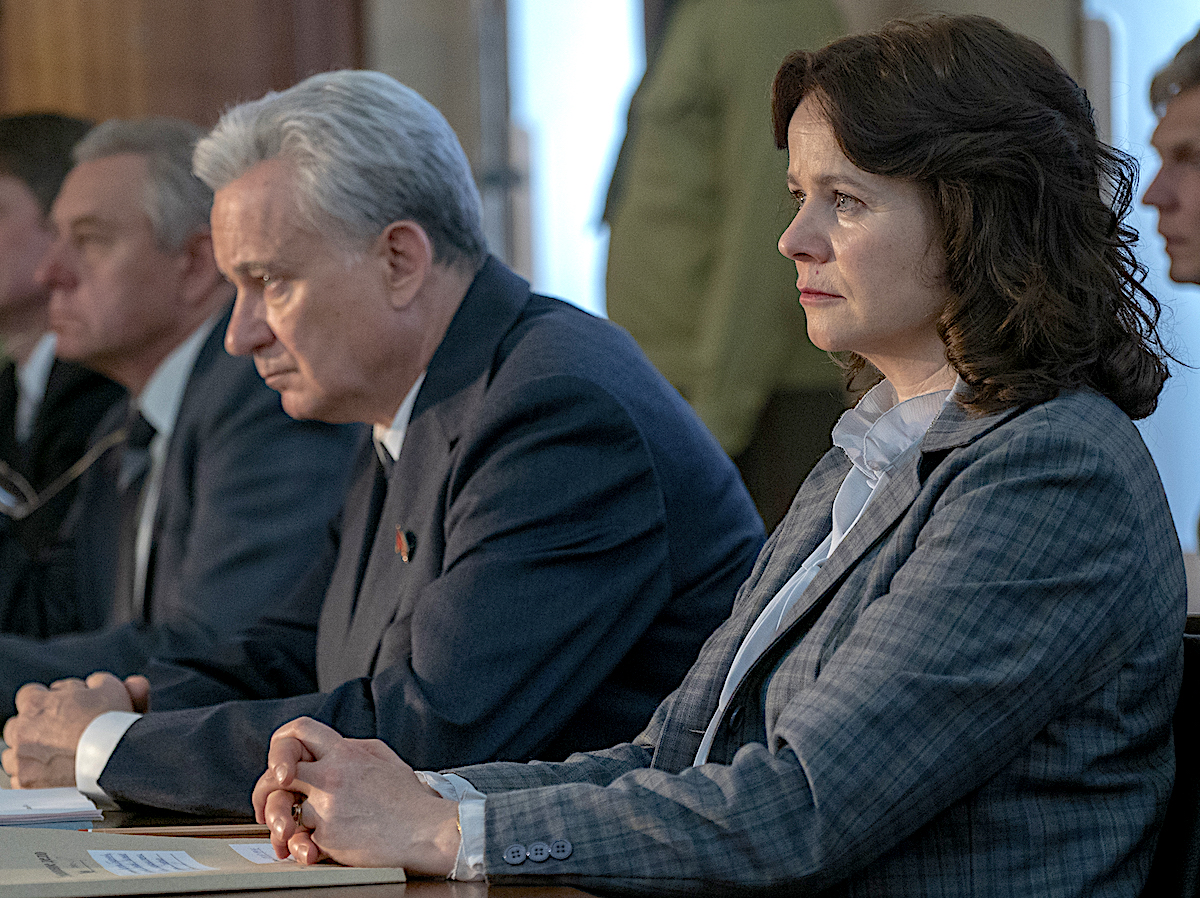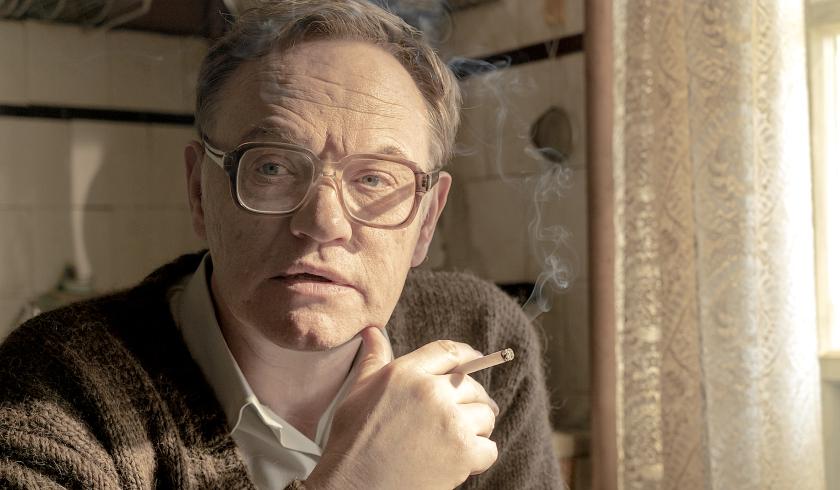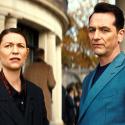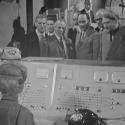This penultimate episode was bad news for animal lovers. It opened with an elderly woman trying to milk a cow, only to be ordered at gunpoint to leave her home right away, because of the morbid threat of radiation. She reeled off a litany of historical famines, wars and invasions that she’d lived through, and concluded that she’d be damned if she was going to leave because of some invisible toxic cloud. Long story short, the cow it was that died, just another fragment of collateral damage in a nation that had absorbed unmeasurable quantities of suffering.
The cow wasn’t alone, because we also followed a group of soldiers hunting down radiation-poisoned animals, mostly lost and bewildered pets stranded in the disaster zone. Watching a tipper-truck full of dead animals being dumped into a pit and covered with liquid cement made miserable viewing.
 Meanwhile, desperate efforts to contain the fallout continued, but the secrecy and incompetence of the Moscow regime hampered relief efforts at every turn. The authorities seemed almost comically ill equipped to deal with any disaster, let alone one on this portentous scale. Of course it was inconceivable that they should approach the ideological enemy, the USA, for help. They had some success shovelling away radioactive waste with a moon-rover from the Soviet space programme, but they needed heftier equipment.
Meanwhile, desperate efforts to contain the fallout continued, but the secrecy and incompetence of the Moscow regime hampered relief efforts at every turn. The authorities seemed almost comically ill equipped to deal with any disaster, let alone one on this portentous scale. Of course it was inconceivable that they should approach the ideological enemy, the USA, for help. They had some success shovelling away radioactive waste with a moon-rover from the Soviet space programme, but they needed heftier equipment.
Bulldozers were borrowed from West Germany but immediately broke down, since the Russians had lied about the vast level of radiation, which could fry electronic circuitry within a couple of minutes. As the supervising official Shcherbina (Stellan Skarsgard, pictured above with Emily Watson) was appalled to learn, the official position was that “a global nuclear catastrophe is not possible in the Soviet Union.” Skasgard’s performance has been one of the joys of the series, as he has gradually thawed from hatchet-faced agent of the state to a brave, principled man who has come to understand the hideous human cost of the catastrophe.
It was left to the scientist Legasov (Jared Harris) to conclude that they would have to use “bio-robots” – humans, in other words – to do the dirty work, and scenes of soldiers frantically shovelling radioactive graphite while a geiger counter clattered hysterically were hair-tearingly tense. It emerged, too, that Legasov had known about a nuclear accident 10 years earlier which offered vital clues about reactor safety, though these were promptly classified top secret by the KGB. It dropped an additional burden of guilt onto his drooping shoulders.
It’s a catalogue of horrors, but Harris and Skarsgard have managed to sneak in some comradely warmth, and even flashes of gallows humour. The scientist Khomyuk (Emily Watson) is painstakingly digging out the facts about mistakes, cover-ups and political interference – the state won’t do it, but somebody has to.















Add comment